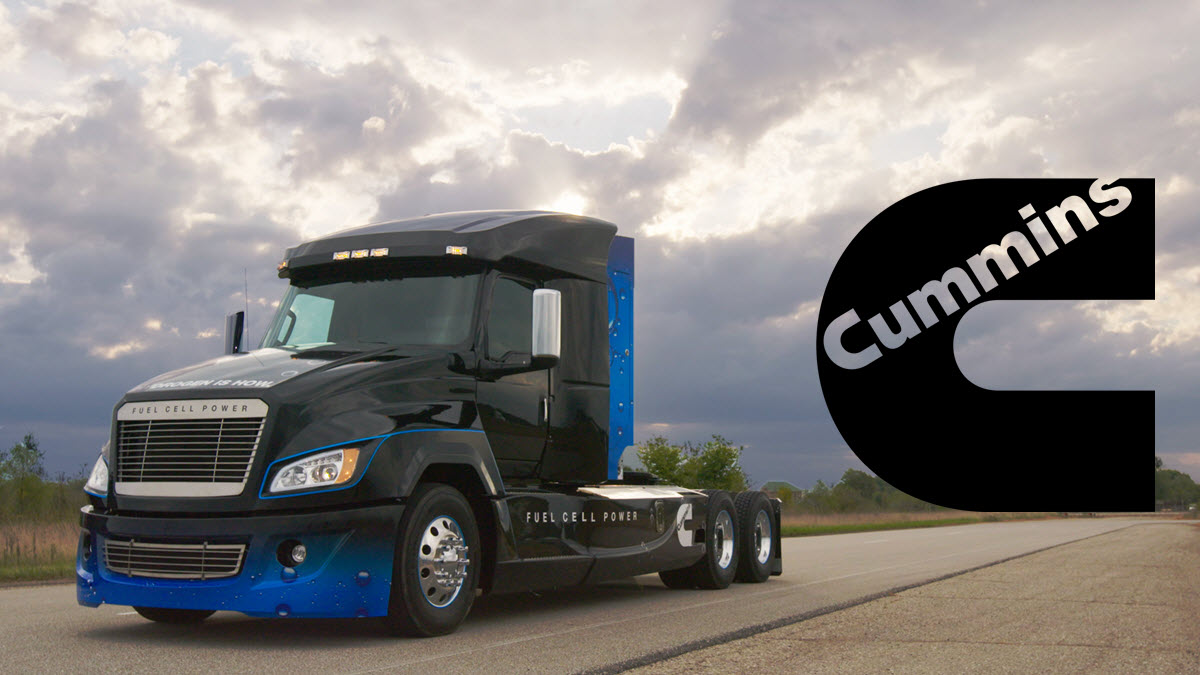
- “But the future is in the fuel cell“
Completing 50 years of operation in the country last November 22, Cummins Brasil celebrates its trajectory with its customers, suppliers and other partners – and prepares for the future. For Cummins Brasil, over the next five decades, decarbonization is the watchword.
To drive a more prosperous and sustainable Brazil, Cummins Brasil announces the arrival of the New Power Business Unit in the region, one of the most important milestones in the company’s history in the country, under the leadership of Sales Director, Maurício Rossi. Globally, the New Power unit is fifth in the Cummins portfolio. The other four are: Engines, Components (filters, turbos, after-treatment), Power Generation and Distribution.
According to the president of Cummins Brasil, Adriano Rishi, “in this strategy, energy diversification, including an initial energy portfolio, with electric engines, cleaner diesel and gas propellers, fuel cells and, mainly, hydrogen, will be essential in the zero carbon context for Brazil”.
In Cummins’ strategic vision, decarbonization will be gradual. Diesel will still predominate throughout this decade – with technology to be increasingly cleaner. Keeping an eye on this reality, Cummins made investments totaling R$170 million and is ready to meet the standards of the Proconve P8 (Euro VI), which establishes a reduction of approximately 77% in NOx and approximately 66% in particulate matter in relation to Proconve P7 (Euro V). The company’s package includes complete and integrated solutions, such as the new Euro VI engine platform (2.8, 3.8, 4.5, 6.7, 9, 12 and 15 liters), in addition to gas options (9, 12 and 15 liters), filters , turbos and the new lighter and more efficient U Module and Single Module aftertreatment systems.
Electric and gas vehicles
For the Director of Sales and New Power, Maurício Rossi, “electric and gas engines will gradually gain space as a result of greater demand in specific niches, such as garbage collection and sugar and alcohol. Automakers are on the way to having a variety of engine options in their catalogs here in Brazil and we are already offering electric propulsion solutions for trucks and buses between 6 and 26 tons”. Cummins’ primary electrification package includes battery packs, control systems and traction motors that can be matched to the customer’s design.
Among diesel, electric, fuel cell and gas, some trends are starting to take shape in the country. “In overnight e-commerce deliveries, electric vehicles, powered by fuel cells or hydrogen, will be increasingly common. First, because they are quieter equipment or even with zero decibels. Second, without traffic, it is possible to extend autonomy and go further”, says Rossi.
This is a very strong trend and a reality for some companies that are already looking for alternative solutions to diesel vehicles for greater business profitability. “In the case of garbage collection, gas trucks should predominate, with cases of companies that already produce their own fuel based on biomass”, says the director of New Power at Cummins. Currently, biomethane is extremely pure inside the landfill, more advantageous than natural gas, reaching close to 96% methane gas. In the case of Cummins engines, the greater the number of methane, the better the equation and productivity.
The 12 and 15 liter Euro VI gas engine options are also included in the company’s solution package for use in door-to-door trucks from 48 to 50 tons. In this case, the target audience is the sugar-alcohol group, which from sugar cane generates biomass which, in turn, generates biogas. In other words, the mills can use this fuel from the alcohol production process, which, in addition to being more economical, has the advantage of having a high calorific value.
When considering the examples cited, Cummins sees that many transport-dependent segments tend to produce their own fuels, that is, the energy matrix will no longer be 100% acquired from existing sources. “It will become conjugated; whoever needs diesel will buy it, but whoever has access to biomass will be able to make their own gas and whoever has an electrolyzer to carry out electrolysis will produce their own hydrogen”.
Hydrogen
With regard to diesel alternatives, battery-powered electric vehicles are already a reality. But the future is in the fuel cell. In Cummins’ latest research, battery-powered vehicles will be a bridge to those using fuel cells and hydrogen.
These vehicles are the ones that will allow a 100% reduction of particulates and all the contamination that we have today. The future is in hydrogen! “If we think in five to seven years, it is possible that the degree of competitiveness of the vehicle powered by the fuel cell will become greater than the electric one, reversing the current situation”, says Rossi.
With the purchase of Hydrogenics, in Canada, Cummins highlights that a path that has been pursued is the use of hydrogen, as a propulsion fuel for vehicles that use fuel cells. For this, it brings to the Brazilian market a new line of fuel cell modules, offering multiple possibilities that can be combined to perfectly adapt to the client’s project.
There are also good prospects for the industrial use of hydrogen. Power generation industries can use Cummins electrolyzers. Today in Brazil there are three models offered: the HySTAT®-100 (0.1-0.5MW), HyLYZER®-500 (2.5MW) and the HyLYZER®-1000 (5MW).
From Cummins perspective, the most economical scenario is for the transporter to have an electrolyser producing its own fuel and use it in its vehicle fleet. “The hydrogen cell is part of the electrification, but it doesn’t require an outlet, as with an electric vehicle”, informs the director of New Power.
It is worth adding that through a solar panel or a wind converter, it is possible to generate the energy for the production of its own hydrogen with the new range of electrolysers from Cummins. The new hydrogen generation equipment can be used in various applications such as vehicles, petrochemical industry, fertilizers, among others.
Cummins recently announced the purchase of Nprox, a company that manufactures hydrogen storage tanks. With this, the company reinforces and consolidates itself in the Brazilian market as a technology leader, bringing another complete package of solutions for green hydrogen: fuel cell modules, electrolyzers and storage tank.
Read the most up to date Fuel Cell and Hydrogen Industry news at FuelCellsWorks




